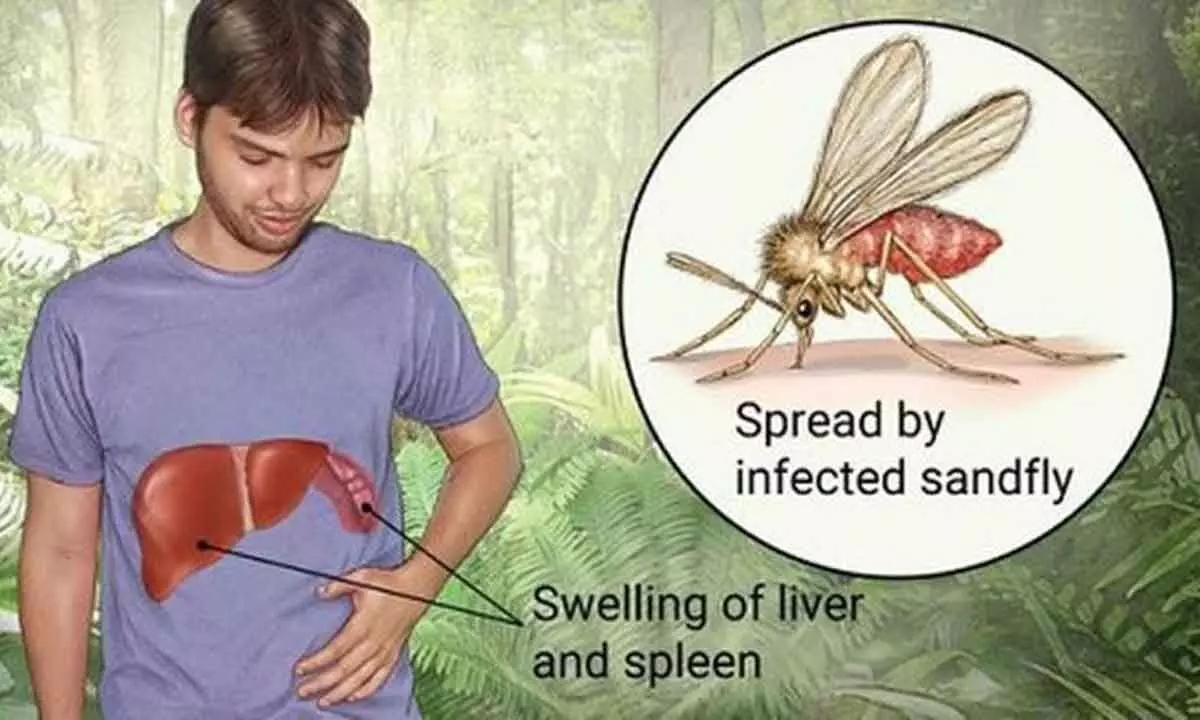Live
- Despite having a woman CM, females in West Bengal most unsafe: JP Nadda
- Lives of daughters like Neha don’t matter to Congress, says PM Modi on K’taka student murder case
- BJD and BJP are working together, says Rahul
- J&K: Injured VDC guard succumbs in Udhampur
- Director Bala unveils ‘Ramam Raghavam’ teaser
- Archery WC: Ace archer Deepika pockets silver in Shanghai; India finish campaign with 8 medals
- Poonam Prabhakar challenges Bandi Sanjay to tell what BJP has done in past decade
- 27pc spike in anti-vaccine posts on X after Covid jabs were available: Study
- Elon Musk visits China, likely to promote Tesla's driverless tech: Report
- Sri Lanka signals shift in interest as Indian firm to jointly manage China-built airport close to strategic Hambantota port
Just In
India on course to kala azar elimination


A disease is considered eliminated when the number of reported cases is below 1 per 10,000 people in each of the country’s blocks for at least three consecutive years. India has reported less than one case per 10,000 population across all blocks in 2023
New Delhi: India has reported less than one case of visceral leishmaniasis (VL), commonly known as kala azar, per 10,000 population, a major step towards eliminating the often fatal, parasitic disease, say official sources. The data from 2023, the first time it has reached the less than one figure across all blocks, has been recently communicated to the World Health Organization (WHO), the officials said.
A disease is considered eliminated when the number of reported cases is below 1 per 10,000 people in each of the country’s blocks for at least three consecutive years. According to the National Vector Borne Disease Control Programme (NVBDCP), 520 cases and four deaths of kala azar were reported last year compared to 818 cases and three deaths in 2022. Around 595 people had HIV-VL co-infection in 2023 compared to 891 the previous year.
“India has reported less than one case per 10,000 population across all blocks in 2023. It is a major step towards eliminating kala azar. We have intimated the WHO regarding the development,” an official told PTI. Visceral leishmaniasis (VL) is caused by protozoan parasites transmitted by the bite of an infected female phlebotomine sand fly. It is characterised by irregular bouts of fever, weight loss, enlargement of the spleen and liver, and anaemia.
In over 95 per cent of cases, the disease is fatal if left untreated. The initial target year for the elimination of the disease in India was 2010. This was later extended to 2015, then 2017, and 2020. In October 2023, Bangladesh became the first country in the world to be officially validated by the WHO for eliminating kala azar as a public health problem. Till now, kala azar was endemic in India in over 630 blocks mainly in four states — Bihar, Jharkhand, West Bengal and Uttar Pradesh. A few of these blocks reported over one case per 10,000 in the last decade resulting in India missing the elimination deadlines.
Much of the success of India’s fight against LV is attributed to the role of the anti-fungal drug liposomal amphotericin B manufactured by the US-based biopharmaceutical company Gilead Sciences. The company, through the WHO, had donated 4,45,000 doses free to the country. This was then adopted in the control programme in 2013. “The availability of a single infusion of liposomal amphotericin B proved to be the game changer that VL needed; it dramatically brought down the cases,” Dr Mitali Chatterjee, professor of Pharmacology at Kolkata’s Institute of Postgraduate Medical Education & Research (IPGMER) told PTI in November.
An estimated 50,000 to 90,000 new cases of VL occur worldwide annually, with only 25–45 per cent reported to WHO. While India looks on course to eliminate the disease, experts emphasise the importance of addressing post-kala-azar dermal leishmaniasis (PKDL) in tandem with VL to sustain elimination. PKDL occurs in individuals who have apparently been cured of VL. Such patients develop skin lesions that are variable in location and intensity. PKDL cases are considered as the disease reservoir, and are strong disease transmitters.

© 2024 Hyderabad Media House Limited/The Hans India. All rights reserved. Powered by hocalwire.com






